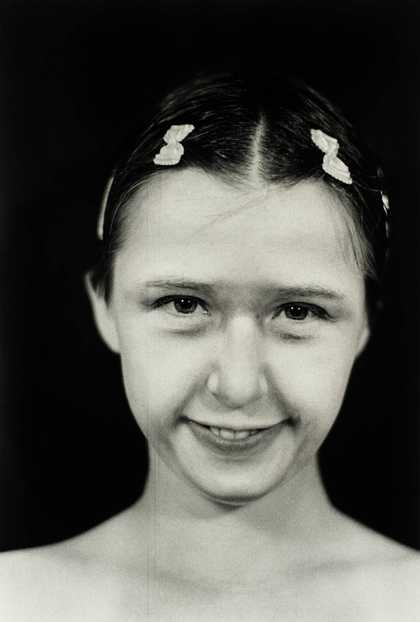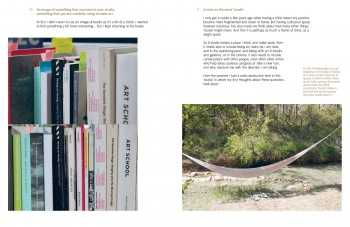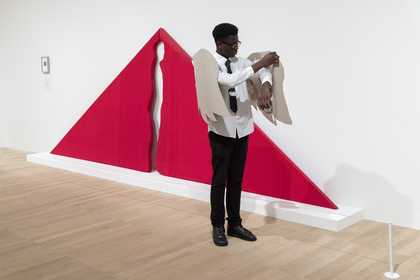Try writing a list of synonyms for ‘transform’. To alter, mutate, revamp or revolutionise are just a few. Think about what you can transform, and how you can do so. Don’t forget you can transform things you can’t see too – you can transform an idea, a feeling, or a way of doing something.
Transforming appearance
You could explore transformation in relation to identity. The image of women in the media is of a person transformed by clothes and makeup. Is this transformation about women better expressing their identity? Or are they presenting an image of themselves the media expects to see? Cindy Sherman is a photographer whose work focuses on such issues. She transforms her appearance to depict a stereotype of a woman. She then photographs of herself in poses that expose how superficial identity can be. Her work shows that identity can lie in appearance not reality.
Transforming the audience
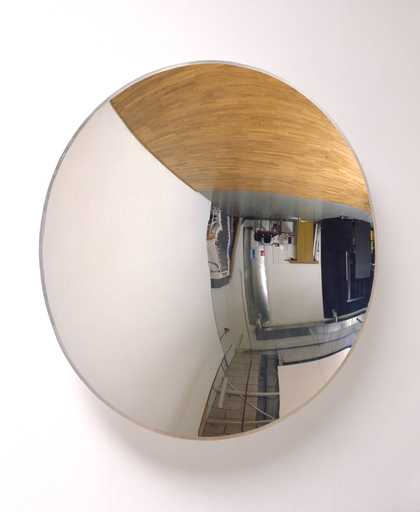
Cerith Wyn Evans
Inverse Reverse Perverse (1996)
Tate
Cerith Wyn Evans’s warped mirror in Inverse Reverse Perverse transforms the appearance of the viewer. This work transfers authority from the artist to the audience – the audience bring the work to life. We might share similar feelings when we experience the work but no two people will see the same thing.. The mirrors distort audience bodies in different ways.
Transformation and myths
Greek myths are full of transformation. The Gods transform those who do wrong as a punishment. They also transform those who are good as a reward. The story of Narcissus is about a vain man who falls deeply in love with his own reflection. So obsessed, he stared at his reflection until he died of grief. He ends up transformed into a daffodil.

Salvador Dalí
Metamorphosis of Narcissus (1937)
Tate
© Salvador Dali, Gala-Salvador Dali Foundation/DACS, London 2025
Salvador Dali interprets this myth in his well-known surrealist style. In his paintings, ordinary landscapes and objects are changed to become impossible. An egg spouts a flower, hands reach out of the ground.
Transforming art
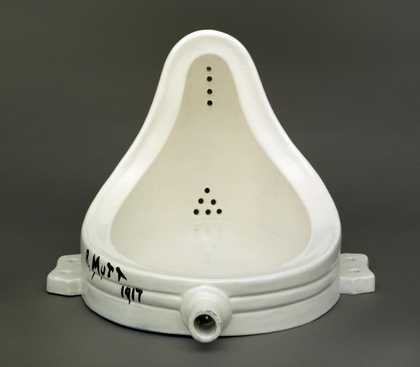
Marcel Duchamp
Fountain (1917, replica 1964)
Tate
© Succession Marcel Duchamp/ADAGP, Paris and DACS, London 2025
Another way to explore the theme is to look at art works which transformed the art world. Marcel Duchamp revolutionized the way we see the function of the artist. He thought the role of artists is to transform things into art in any way possible, whether they physically made them or not.
In 1917, he submitted a urinal signed ‘R. Mutt’ to the Society of Independent Artists as a work of art under the title Fountain. He transformed the urinal by removing it from its every day setting. He turned it around, signed it, named it, and most importantly, called it art. The exhibition committee rejected Fountain and refused to display it. Duchamp, under a fake name, published a summary of the ‘R. Mutt Case’ in the magazine The Blind Man. He used a photo by the influential photographer Arthur Steiglitz. Duchamp successfully infiltrated the press in this self-advertising move that earned him huge historical importance.


